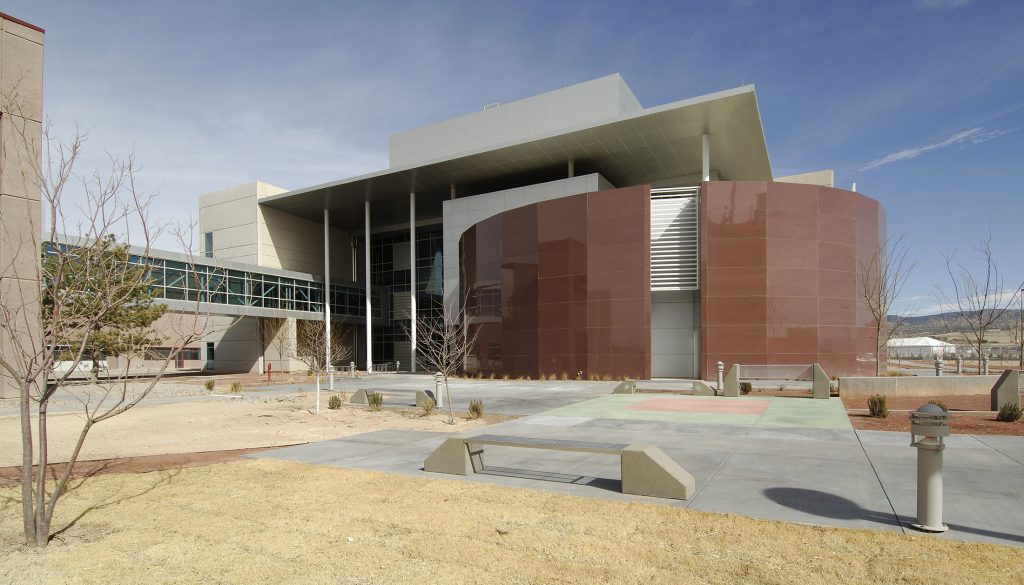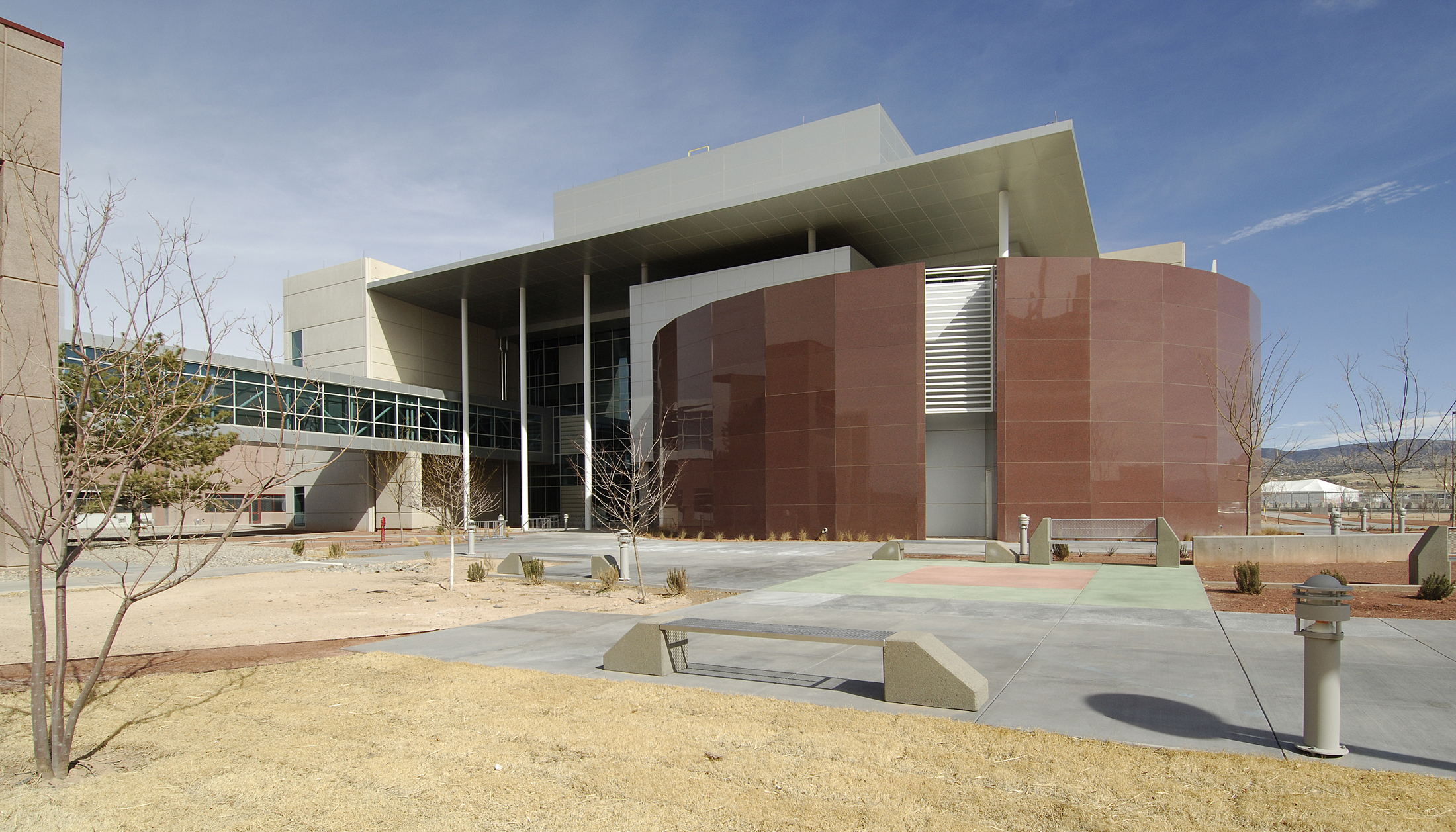
ALBUQUERQUE, N.M. —Sandia National Laboratories makes tiny electronic devices and has powerful supercomputers. But it also has a strong interest in buildings that help sustain the environment.
Thus, Sandia’s newly completed three-story MESA Microsystems Fabrication (MicroFab) facility was recently certified under the Leadership in Energy and Environmental Design (LEED™) Green Building Rating System developed by the U.S. Green Building Council (USGBC).
Sandia is a National Nuclear Security Administration laboratory.
It is believed to be the first microchip fabrication facility to obtain this prestigious certification.
LEED certification is granted only to building projects that demonstrate superior performance in five key areas of human and environmental health: sustainable site development, water savings, energy efficiency, materials selection, and indoor environmental quality.
Energy efficiency is an integral part of the MESA project design, including a highly efficient and innovative Central Utility Building central plant that serves both the MicroFab and the adjacent MicroLab buildings. The cleanroom functions of the MicroFab lead naturally to an emphasis on indoor air quality, including use of low-emitting materials and high-efficiency air filtration media.
Since semiconductor manufacturing processes involve significant water use, the MicroFab incorporates a high-efficiency ultra-pure water generation process, a water recycling loop, and the reclaim and reuse of water for cooling and scrubber applications.
Other project-specific green measures include accessibility to alternative transportation options, occupant-based water-efficient plumbing fixtures, and low-water use landscape design.
Resource conservation through waste management, as well as incorporation of recycled and locally manufactured materials were also emphasized in the project.
Currently, there are approximately 1,000 LEED certified buildings worldwide with another 8,000 building projects seeking LEED certification.
The MicroFab facility is one of the most complex buildings at Sandia and is the first of three new facilities that make up the Microsystems and Engineering Sciences Applications (MESA) complex. The MicroFab provides cleanrooms and transition cleanroom space, support labs, chemical and specialty gas rooms, and a service yard.
Other “green” Sandia buildings include the Center for Integrated Nanotechnology (CINT) and the Joint Computational Engineering Laboratory (JCEL).
